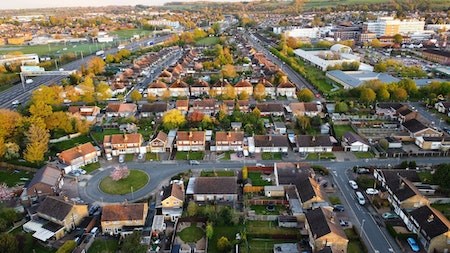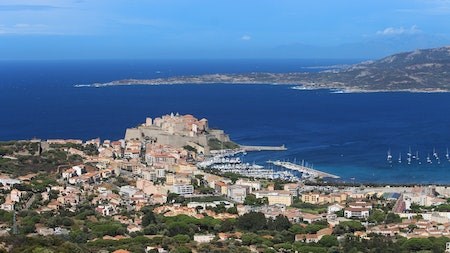It appears likely that the Western Cape’s level of building plans passed in 2022 will exceed those of the country’s most populous province, Gauteng, for the first time in recorded history.
John Loos, property sector strategist at FNB Commercial Property Finance, says that relatively high levels of Western Cape residential building activity are not merely the result of the current trend of increasing demand for homes by people from other provinces.
“It would be a mistake to attribute the current high levels of residential building planning and activity in the Western Cape, relative to that of other provinces, to the recent strong wave of middle to higher income group semigration into that province,” says Loos.
He believes they are a sign of a regional economy that may be moving into a period of significant economic outperformance compared to the rest, driven by decades of superior attraction and retention of skilled labour.
Data
Late last year, the StatsSA September release on residential building statistics for the entire country pointed to a national year-on-year decline in new planning activity in the third quarter. This followed good positive growth for the previous period.
But on a provincial basis, there have been some fairly wide divergences. Most notably, the Western Cape Province significantly outperformed the two other major provinces, Gauteng and KZN.
For the first time in its recorded history, the Western Cape appears on track to have the largest share of residential building activity of all nine provinces.
To account for data volatility, FNB uses a three-month moving average to smoothen the data. For the three months to September 2022, the national growth rate in residential units building plans passed was a hugely negative -21.88% year on year.
Loos says this decline is not too surprising, given that rising interest rates and a slowing economy have recently been dampening national housing demand.
“Given the Reserve Bank’s significant interest rate hiking from late 2021, we had expected some slowdown in planning activity.”
Slowdown
All three major provinces showed signs of planning slowdown in 2022, as expected. However, the growth divergences remain large. In Gauteng, building activity declined by -7.9% year on year for the three months to September, whereas activity in KZN declined by -11.8%.
However, the growth slowdown in the Western Cape has been completely different. From a positive year-on-year growth rate of 66.7% for the three months to August, growth in this province’s plans which have been passed, has slowed to a still-strong 36% for the three months to September.
“This strong growth in plans passed in the Western Cape continues to point to the likelihood that the total of Western Cape’s annual building which have been passed for 2022 may exceed those of Gauteng - and each of the other provinces - for the first time in its recorded history,” says Loos.
This is significant because Gauteng is still by far the largest provincial economy as well as the province with the biggest population.
Ratios
For the first nine months of the year, the Western Cape’s number of units of residential building plans which have been passed accounted for 37.8% of the national total. In comparison, Gauteng’s share amounted to 28.5%, and KZN came in at 13.2%.
The figures for residential buildings completed were similar. Western Cape had 43.8% of the national share in terms of number of completed units, Gauteng 33.3% and KZN 9.6%.
Size
Loos emphasises that this recent residential building activity outperformance does not imply that the Western Cape is anywhere near as big as Gauteng when it comes to economic or existing housing market size.
Gauteng’s gross domestic product (GDP) accounts for 34% of national GDP, according to IHS-Markit estimates. That of KZN is 15.5%, with the Western Cape being the third largest economy with 13.7% of national GDP.
Gauteng has a population of 14.1 million, KZN has 11.6 million, and the Western Cape has a far smaller 6.9 million.
On a per capita income basis, however, the Western Cape is now only marginally behind Gauteng, the highest per capita income province. Gauteng measured an estimated R101 811 per capita income in 2021, the Western Cape estimated R99 204, and KZN was estimated at a far lower R58 477.
For the past 20 years, the Western Cape’s 2.6% average real GDP growth a year has matched that of Gauteng, according to IHS Markit estimates. Growth rates in these two provinces have outperformed all of the other provinces over that time.
“In this time, the Western Cape has been building a brand as a well-run region, and one with a great lifestyle, so it is better able than any other province to attract and retain skilled labour. This may have set the stage for it to even start outperforming Gauteng in terms of economic growth - and also have an outperforming property market,” says Loos.
Semigration flows
Most South Africans believe the Western Cape is the country’s biggest semigration destination, but Loos says this does not appear to be true.
“Gauteng is the biggest because of its massive economy and population, both of which dwarf the Western Cape,” says Loos.
“However, our various research projects over the years have pointed to the Western Cape having a stronger net inflow of middle to higher-income semigrants than any other province. In other words, the inflow of middle to higher-income semigrants exceeds the outflow.
“In Gauteng, the gross inflow is likely far bigger than that of the Western Cape. However, its outflow exceeds its inflow, apparently causing a net outflow from that province for much of the time.”
Growth rate
“For some time, we have believed the Western Cape’s strong net inflow of skilled and often more affluent new residents over the past 20 years or so would result in its economic growth rate outperforming the rest of the provinces, including Gauteng.
“This is not merely because semigrants arrive with money to spend and in need of new homes, but because they add to the province’s skilled labour supply, and skilled labour is a key driver of a modern services dominated economy.
“We believe the province’s relatively strong performance in new home building planning and activity reflects its economy outperforming in terms of growth, but not size. New jobs are being created at a faster pace, fuelling stronger demand growth for housing - not a larger overall housing market size.
Economic outperformance?
Loos says it isn’t just the Western Cape’s residential building planning that appears to be catching up with levels in Gauteng.
Using three years moving averages to smoothen out otherwise volatile series showed that retail property building plans passed in the Western Cape from 2020 to 2022 were at 20.9% - slightly higher than the 20.7% of Gauteng.
“Although these levels are almost the same, for a far smaller economy’s retail building plans to match those of Gauteng is very significant,” says Loos.
“Back in the late-1990s, Gauteng accounted for close to 40% of the national total, whereas the Western Cape was less than half of that. For the three years to 2022, the Western Cape’s square meterage of office plans passed also exceeded those recorded in Gauteng. The Western Cape accounted for 36.2% of the national total compared to 31.9% for Gauteng.
The Western Cape does not feature as prominently in industrial property, as it focuses on manufacturing to a lesser extent than KZN and Gauteng. Its square meterage of industrial building plans passed is thus still significantly lower than the other two major provinces.
The Western Cape’s economic size, its population and its existing property market size in square metres of space remain far smaller than those of Gauteng, which is still the economic hub of South Africa.
However, Loos sees StatsSA data pointing to not only residential building activity matching, and even surpassing, that of Gauteng recently but also retail space planning and office space planning showing similar trends.
“This suggests that the Western Cape is gearing up for more rapid growth in demand for property space than Gauteng, the province with which it has shared the tag of ‘economic growth outperformer’ over the past two decades or so.
“This may indicate that the Western Cape is moving towards economic growth outperformance relative to all the other provinces. This is because the past 20 years of superior net semigration inflows may have left the province with a stronger skilled labour base relative to its economic size,” says Loos.
Writer : Sarah-Jane Meyer




